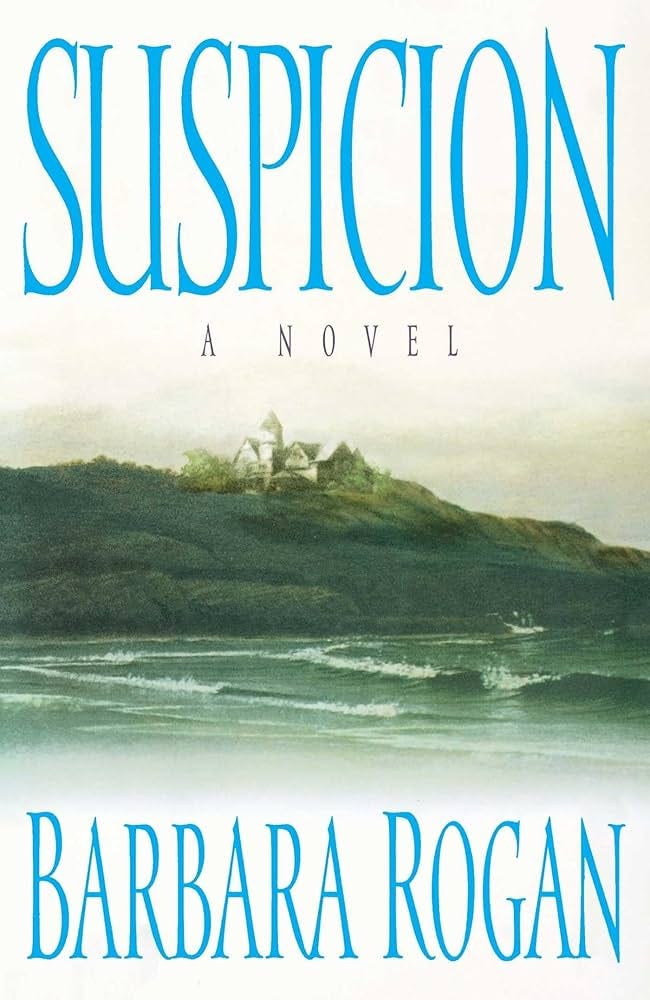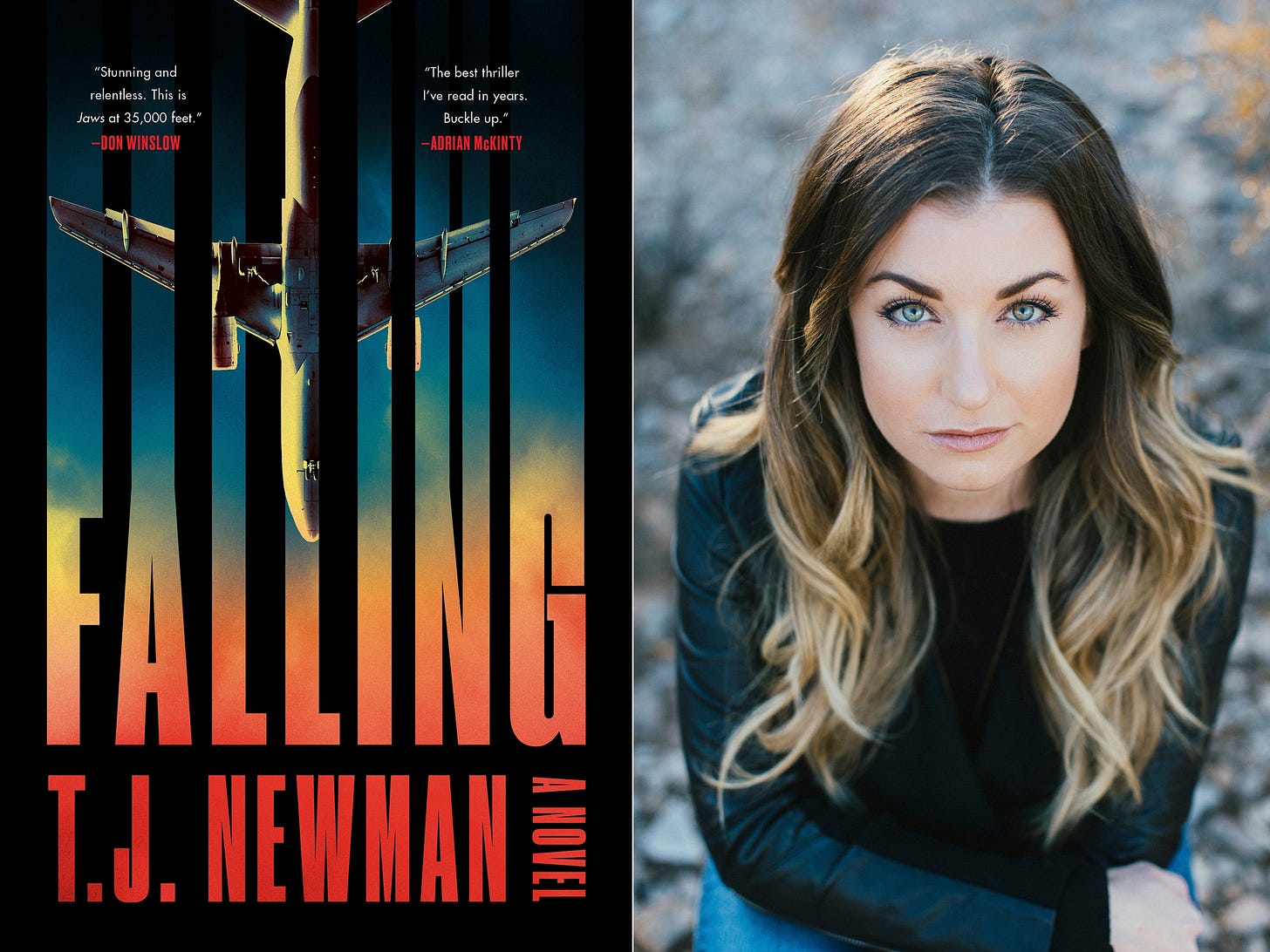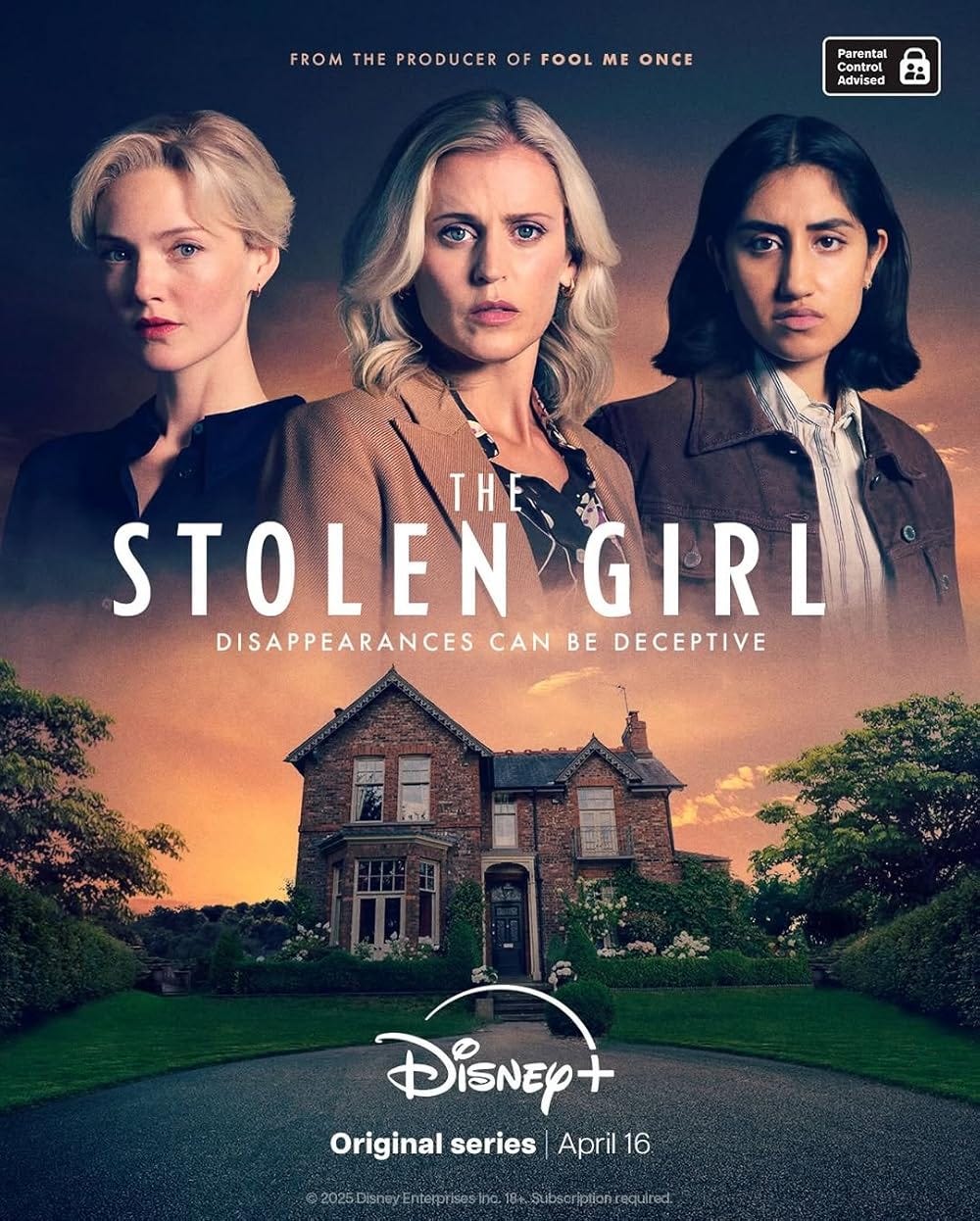AN OBSCURE THRILLER WORTHY OF ANOTHER LOOK
My morning walks generally take me past half a dozen of those Little Free Libraries that certain homeowners erect in their yards as a way of giving away books that they no longer want. I can never pass these without at least glancing at the titles on display. I week or so ago, I reached into a LFL and grabbed hold of a battered paperback copy of a novel called Suspicion, written by Barbara Rogan, a author I hadn’t previously heard of. The cover contained a quote from a Washington Post Review of the book: “If you can put this book down before you’ve finished it…your heart may have stopped beating.” Sadly, that incoherent blurb is typical of how bad book reviewing has gotten in America over the past few decades. What does it mean? That the book is so scary it might actually kill you? If that’s the case, how would you have put the book down? You might drop it from your cold, dead hands, but you probably wouldn’t waste your final seconds putting it down. Fortunately, the back cover contained a less illiterate blurb from a review in the San Francisco Chronicle: “Like Shirley Jackson, Rogan brings sophistication, skillful writing, and subtlety to the business of ghosts.” As a result, I decided to take the book home with me.
Most of the books I snag from LFLs end up unread and gathering dust in some forgotten corner of my home. But, for reasons that aren’t quite clear to me, I began reading Suspicion (horrible title, by the way) almost immediately. The previous night, I had finished reading Adrian McKinty’s overrated 2022 thriller, The Island. Like his earlier overrated thriller, The Chain, it was entertaining but included gaps in its storytelling logic so glaring that even a pop-fiction junkie like myself had difficulty suspending his disbelief. Perhaps, I thought, the universe, seeing that I had been left disappointed by an overrated thriller, had decided to balance the scales by pointing me in the direction of an obscure thriller that might dazzle me. In any case, I set out to read Suspicion, and I’m glad I did. Though no masterpiece, it is, as the S.F. Chronicle said, sophisticated, well written, and fairly subtle.
Published in 1999, the book tells the story of Emma Roth, a novelist whose work is generally well reviewed but sells only modestly. She and her younger sister, Maggie, have lived all their lives in New York City. Emma, twelve years prior to the opening of the novel, married Roger Koenig, a research physicist who holds a non-teaching job at Columbia University. Roger comes from a fabulously wealthy WASP family, and his parents largely disowned him when he married Emma, who comes from an impoverished and (even worse) Jewish family. Roger’s parents softened just a bit when Emma gave birth to a son. Zack, now eleven, is allowed to visit his grandparents’ palatial Rhode Island estate during his summer breaks from school. But Roger and Emma are still largely shunned by his parents (Emma has retained her maiden name, which seems to symbolize the fact that she has never been welcomed among the Koenigs). As the novel opens, Roger has grown tired of city life and wants to move from Manhattan to a small town in Long Island’s Nassau County, from which he can commute to Columbia. Emma, who describes herself as a “city rat,” is totally opposed to the idea. Although her novels are generally ghost stories set in rural locales, Emma believes that the energy of New York City is responsible for keeping her creative juices flowing. She fears that her mind and her imagination will begin to atrophy if she allows herself to be relocated to some bucolic suburb. Nonetheless, Roger manages to drag her out to see an empty and somewhat isolated mansion that is for sale in the small town of Morgan Peak. Known as the Hysop mansion, after its previous owners, the house sits at the top of a steep sea cliff. The only other structure in sight is a smaller carriage house that goes with the property. Roger is instantly besotted with the place. Emma finds it depressing. But she agrees to let local Realtor Gordon Bass take her and Roger on a tour of the mansion. The inside of the place leaves her as empty of joy as the outside had. Until, that is, she sees the octagonal tower room, which sits at the top of the house and is accessed via a spiral staircase. The room has a 360-degree view of the property, and a dramatic view of the Atlantic Ocean. The Hysops used it as a library. But from the moment she lays eyes on it, Emma sees it as a potential writing room, an isolated spot completely cut off from the rest of the house and just perfect for providing her with the kind of solitude she needs in order to write her novels. Here is Rogan describing Emma’s first encounter with the room:
“At the foot of the spiral staircase Bass stands back to let Emma proceed. She climbs the winding steps and emerges through the floor of the most astonishing room she has ever seen. The tower’s octagonal shape produces a kind of sectioned openness. The arc of the ceiling is repeated in the windows, one to a section. The afternoon light, pouring in from all directions, creates an air of heightened lucidity. The view is panoramic. Pale ash paneling and built-in bookcases on four of the eight walls anchor a room that might otherwise float off into space. Perfect for a writer, the Realtor had said, and he was right. It is perfect. It is a room that cries out for a writer. A room any writer would kill for. Emma sees her books on those shelves. She sees where she would place her desk and where the armchair would go. She pictures the room as hers and feels the bolt of desire snap into place as surely as the lock on a cell door. She wants this tower. She lusts for it. She feels an immediate conviction that she must own this room, followed instantly by the certainty that she never will.”
Of course anyone who has ever read a gothic romance or a horror novel or any type of real-estate-porn novel knows for certain that Emma will soon be the co-owner of the Hysop mansion. And they also know that things will not go smoothly for Emma, and that Hysop mansion will not turn out to be a writer’s dream house after all. In fact, for awhile at least, it will be a bit of a nightmare.
Shortly after Emma and Roger and Zack move into the Hysop mansion, weird things begin to occur. Much of this is boilerplate haunted house stuff. Emma hears noises up in the tower room but, when she investigates, finds nothing that could have caused them. Sometimes, when standing out in her yard, she will look up at the windows of the tower room and see someone moving around in her writing tower. But, when she investigates, she finds no one there. Another hoary old cliché that Rogan employs is the way that everyone in Morgan Peak seems to know some dark and terrifying secret about the Hysop mansion but nobody will elaborate on it for Emma. Likewise, when she explains her fears to Roger, he treats her like a child (she is considerably young than he is) and insists that she is just allowing her imagination to run away with her. A few weeks after the move, Emma would probably have happily given up the mansion and moved immediately back to Manhattan if not for the fact that her son, Zack, is thriving in Morgan Peak. He is a gifted young soccer player, and has joined a top-notch local youth team where he gets special attention from the coach (primarily because the coach is a perv who wants to sleep with Emma). What’s more, Roger loves the new house. In spite of her determination not to become a part of the Morgan Peak social scene, Emma makes some good friends among the parents of Zack’s soccer teammates. What’s more, Roger and Emma have rented out the carriage house to a psychotherapist, Caroline, who works with battered women and has become a friend and confidante of Emma’s. Thus, for awhile, anyway, she is able to put aside her fears about Hysop mansion. Besides, though she writes nothing but ghost novels, she has always insisted that she herself is a complete nonbeliever where ghosts are concerned. She doesn’t want her friends to think that she has suddenly started to fall for what she considers a stupid superstition. And so she toughs it out…for awhile.
Despite what the Washington Post had to say about it, Suspicion is not a riveting page-turner. Rogan doesn’t appear to have meant it to be. It feels more like a novel about the clashes between various classes of people: city dwellers vs. suburbanites, upper class vs. working class, blacks vs. whites, men vs. women, and so forth. To my surprise, this aspect of the novel was rather interesting to me. I have never been a well-off east-coast soccer mom, so Rogan’s story opened up a largely unknown world to me. She does a very good job of detailing the tensions between the various groups of people who make up the population of Morgan Peak. Gradually, though, she also does a fine job of turning Suspicion into a pretty good crime story. Although Rogan takes her time getting to it, the heart of the story is Emma’s growing fear that someone is trying to either kill her or drive her to commit suicide (the film Gaslight is, appropriately, name-checked a few times). And by the time this suspicion dawns on Emma, the suspects are thick on the ground. Roger seems to have grown awfully close to his pretty young research assistant at Columbia. Did he move Emma out to Long Island to make it easier for him and his assistant to pursue an extramarital affair? Caroline, the psychotherapist and ardent feminist who rents the carriage house, seems determined to turn Emma against Roger. Caroline seems to believe that every husband is just an abuser looking for an excuse to unleash his fury upon his wife. When Emma rejects this notion, Caroline seems to turn against her. Could Caroline want Emma dead for being insufficiently feminist? Roger and Emma’s sister Maggie have always been hostile to each other in the past. But lately they seem to be faking the hostility. Could it be that Roger and Maggie are having an affair and are hoping to push Emma out of the way by driving her mad? Zack’s soccer coach, Nick, seems obsessed with Emma. But Emma doesn’t appear to have any sexual interest in him at all. Could he be punishing her by trying to drive her to suicide? Roger’s parents have never liked his Jewish wife. Could they be behind the strange happenings at Hysop mansion? Of course, Roger’s parents are growing old. Perhaps he fears that, when they die, they will leave their vast wealth to charity unless he ditches his Jewish wife and marries someone more likely to appeal to their snobbish WASP social set. Of course, it’s always possible that the house is, indeed, haunted and that the ghost of the late Mrs. Hysop is trying to drive Emma from her home, a notion that even the stubbornly commonsensical Emma begins to entertain after awhile.
I was impressed by how many characters Rogan was able to viably cast suspicion upon without being heavy-handed about it. Part of the reason for her success is the book’s length – over four hundred pages of fairly small print. Rogan develops her characters slowly, so only after we know each character fairly well do we see that he or she might have some animus against Emma. In a shorter, more page-turner-y book, it would be ridiculous for Emma to move to a new town and then suddenly find herself running afoul of so many different people. But Rogan wasn’t writing the literary equivalent of an episode of Murder, She Wrote. Her book is as much an exploration of its social milieu as it is a ghost story or a crime novel. And that might be one reason why it never became much of hit with the reading public. One reviewer at Goodreads.com gives credit to Rogan for creating a good concept for a thriller novel. But then she writes: “All that sounds great, which is why I don't understand why so much of this book is spent describing a little boy's soccer games.” Rogan does spend a lot of time detailing how life in Morgan Peak often revolves around children’s soccer games. But I suspect that is true about a lot of affluent American suburbs. Rogan uses soccer matches as a laboratory for bringing together numerous characters – from a fairly wide array of backgrounds – and forcing them to interact with each other even when they would probably rather not. It’s an ingenious move, in my opinion.
Still, I will concede that, for a book advertised as a thriller, Suspicion often moves at a leisurely pace. This, too, is probably deliberate. At the beginning of the novel, Emma gives up the fast pace of city life for the slower and less exciting life of a suburban working mom. The slowness of the novel is a product of form following function. And the book probably would have been much better received had it been published in the 1950s or 1960s. Nowadays, many readers seem to expect their thrillers to have gob-smacking disclosures on every page. That’s how we’ve gotten so many books such as Adrian McKinty’s The Island and T.J. Newman’s Falling, books with so many incredible revelations in them that, after awhile, they begin to pall – at least for me. Netflix and other streaming services have probably also done harm to the kind of slow-burn ghost story that Rogan delivered in Suspicion. The Haunting of Hill House, The Haunting of Bly Manner, The Fall of the House of Usher – these miniseries tend to deliver a nonstop onslaught of scares or, at the very least, lots of violence and gore. Suspicion has almost no violence or gore. It is a psychological horror novel.
The novel gestures in the direction of several classic films – Rebecca, Gaslight, Midnight Lace, and (unsurprisingly) Suspicion – but it also reminded me of several TV miniseries that I have watched recently, stories that were written and produced nearly a quarter century after Rogan’s novel was published. The recent Netflix miniseries Sirens features a luxurious house on the top of a cliff – unimaginatively named Cliff House – complete with a tower room accessed by a spiral staircase. The story features a wife married to an older man, whose family wealth paid for the fabulous cliff house, a man who may be planning to ditch his wife for a much younger woman. Likewise, the explanation of what is happening to Emma in Suspicion is almost identical to the explanation of why the main female character of the recent Hulu miniseries The Stolen Girl is also being driven to the point of madness by some unknown tormentor. Like Suspicion, last year’s Netflix series The Perfect Couple also featured a female novelist whose fabulous mansion has become the sight of deadly turmoil. The plot of Suspicion also tracks pretty closely to the plot of the 2021 Netflix film Things Heard & Seen, which starred Amanda Seyfried. Rogan’s novel strikes me as superior to all of these similar TV dramas. Some enterprising producer ought to snap up the rights to the novel and adapt it as an eight-part miniseries for Netflix.
One other thing Rogan ought to be congratulated on is her ability to create characters who are multi-dimensional, something that a lot of today’s pop-culture creators seem incapable of doing. In Suspicion, for instance, pervy soccer coach Nick manages, at one point in the novel, to perform a truly heroic deed. You’ll never find perviness and heroism combined in a contemporary TV or pop-fiction character. Being pervy automatically renders you incapable of possessing any good points. Several of Rogan’s other characters defy stereotype in similarly interesting ways, although I might spoil the plot if I were to explain to you how they do this. Suspicion has a boring, generic, and overused title, but that is about its only major flaw. The San Francisco Chronicle wasn’t far off in comparing Barbara Rogan’s book to the work of Shirley Jackson. Both women proved themselves capable of creating domestic drama that is sophisticated, skillfully written, and frequently quite subtle. Jackson wrote a handful of classic haunted house novels. Suspicion isn’t quite as good as the best of Shirley Jackson, but very little is. If you are jonesing for a good haunted house story, start rummaging through the Little Book Houses in your neighborhood, and keep an eye out for Suspicion.







